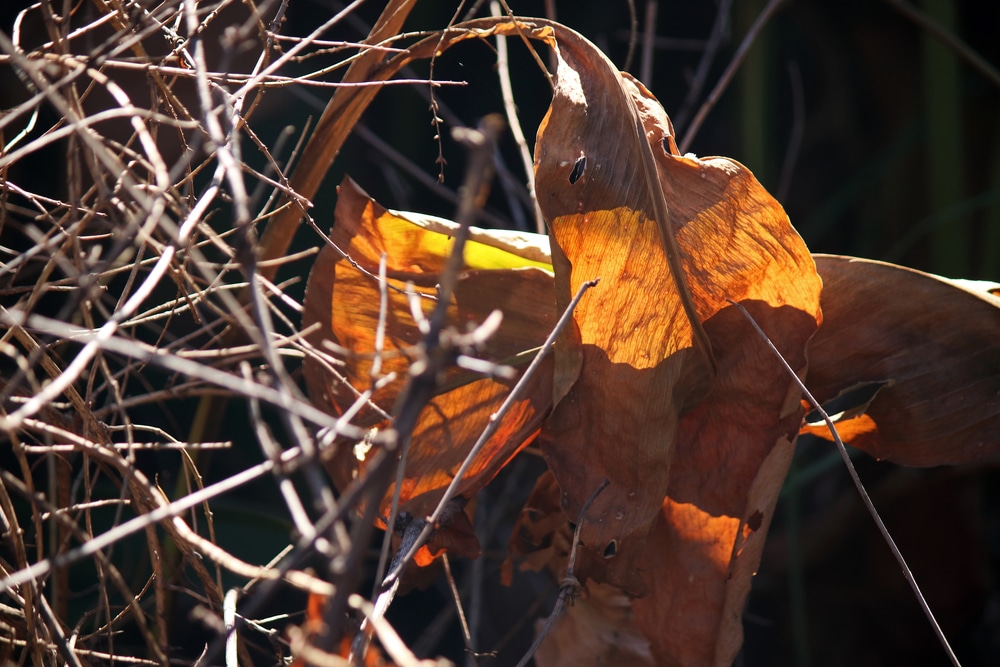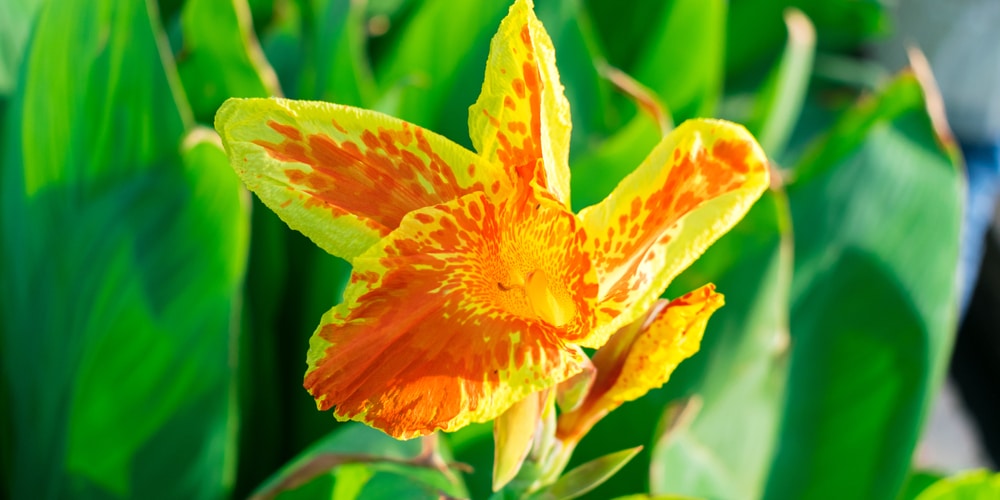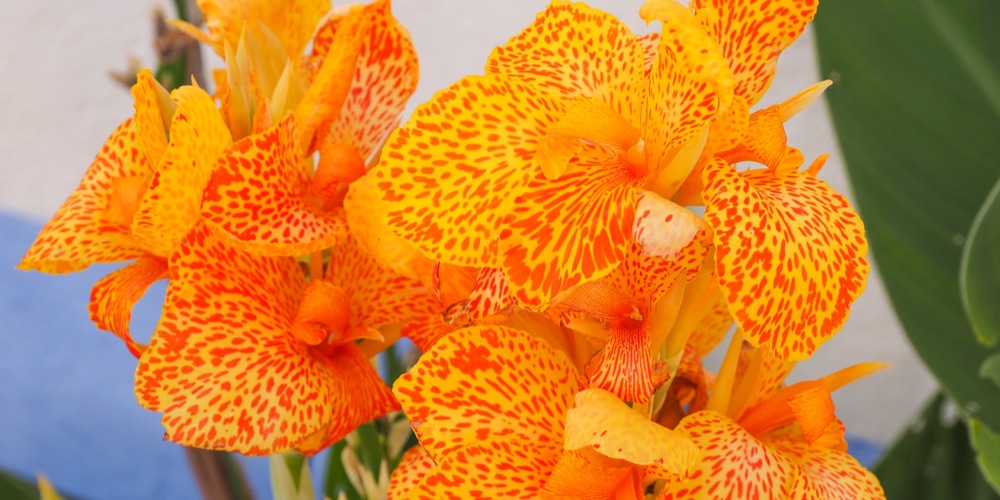Canna lilies are large and hardy plants that produce vibrant foliage. Canna lilies thrive in warm, tropical climates. If you begin to see browning on your canna lily, it may be because the plant is entering dormancy for winter. It could also be because of a virus, underwatering, or pests.
In this article, we will explain why your canna lily leaves are turning brown and some easy steps you can take to protect your plants.
Why Are My Canna Lily Leaves Turning Brown?

If you notice browning on your canna lily leaves, there are several potential causes, including:
The Arrival of Winter Weather and Cold Temperatures
Canna lilies thrive under warm temperatures, full sunlight, and humidity. During the spring and summer months, they will grow to their large size, but in winter, they will enter dormancy. As it gets colder, your lily will begin to yellow and brown. This is the natural life cycle of the plant.
The Plant Is Infected With a Virus
Canna lilies can become infected with various viruses, which can cause the browning and yellowing of leaves. Canna viruses cause abnormal brown streaks to appear on the leaves. Infected plants will grow slower than healthy plants. Pests often cause viruses, and infections can transmit between plants. Destroy any plants that show signs of the virus and separate the canna lilies from other flower or vegetable beds.
The Soil Is Too Dry
Canna lilies need constant watering and moist soil to survive. Dry soil will cause browning on canna leaves. Potted plants should have daily watering, and plants in the ground will manage with water every two days.
The Presence of Pests
Many pests can latch onto canna leaves, including caterpillars, spider mites, thrips, or aphids. Remove pests, or they will cause your canna leaves to turn brown. Closely inspect your lily to spot large holes in the leaves or the presence of pests. To remove pests, wash the plant with water and spray the leaves with an environmentally friendly insecticide.
The Soil Has Too Much Fertilizer
Canna lilies are hardy plants, but too much fertilizer will cause discoloration of the leaves. Excess fertilizer releases salt into the soil, harming the lilies’ roots. It is best to use a slow-release, high nitrogen fertilizer.
How Do I Prevent Browning on My Canna Lily Leaves?
While browning on your canna lily leaves can be destructive and unattractive, there are several easy steps you can take to ensure your plant stays healthy.
To avoid browning on canna leaves, try the following remedies:
- Closely inspect the canna leaves before purchasing to ensure no discoloration or stunted growth, which could be a sign of an existing virus.
- Water the canna lily leaves from the stem downwards.
- During planting, space the canna lilies out to allow room for growth.
- Give your canna lily full sun and avoid excess shade.
- Trim your canna lily as it grows.
How Do I Protect My Canna Lily During Winter?
If you live in colder temperatures, your canna lily will begin to brown as it enters dormancy for the winter. You can easily preserve your canna lily root for the winter.
To preserve the plant for spring, complete the following steps:
- Cut the canna lily down to the stalk.
- Pull the plant out of the pot or ground.
- Remove the soil until you see only the root. Canna lilies have a rhizome root, which is dense and thick.
- Rinse off the excess soil and place the root in a paper bag.
- Store the root in a cool and dry space.
- After winter passes, replant the canna lily outside. It will only take a few weeks for the plant to bloom with ample water and sunlight.
In Conclusion
Browning on canna lily leaves is a frustrating problem. No one wants to plant a vibrant and colorful canna lily, only to discover that it turns brown or yellow. There are many reasons why canna lily leaves turn brown, but there are many remedies. If you observe the plant closely and follow these simple maintenance suggestions, you can successfully grow these beautiful plants.

